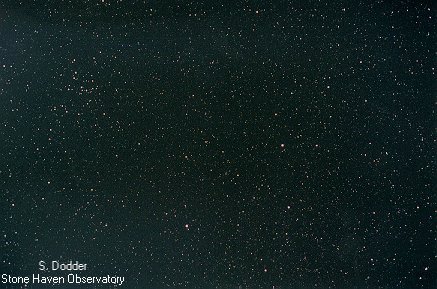 |
I shot this while looking to catch some Quadrantid
meteors on 1/4/00. Didn't catch any, but isn't this a lovely shot of Leo and the open cluster
Melotte 111 in Coma Berenices?
Canon FTb body with a 50mm lens at f/2.8 for 10 minutes on Kodak Gold 400 ISO film piggybacked
on the C8 at Stone Haven Observatory.
|
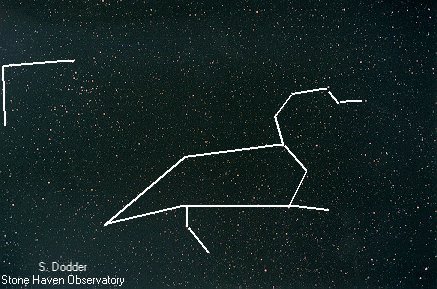 |
Here's the same shot with a rough trace of the
constellations. very rough trace. |
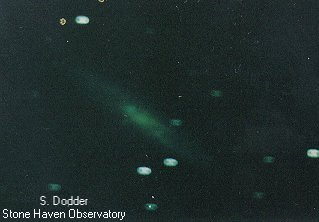 |
At first, I didn't like this one. I tried another bunch of
deep space pictures recently, trying to get a handle on exposure times, only to find out my
pier has
somehow come out of alignment. Also, I still can't focus worth a darn. But when you look at
it, it does actually show up as a brilliant edge on spiral galaxy. You can actually detect
the large dust lanes around the center, too. I guess I'll keep it until I get a better one.
Canon FTb camera body taken at the Cassegrain focus of a C8 for 1/2 hour on Kodak Gold 400 ISO
print film.
|
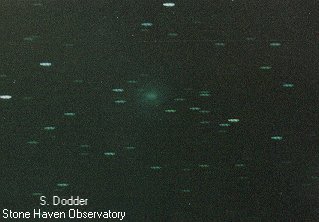 |
Ok, it's kinda faint, but it's there. I think it looks
better here than live, but what the heck. M74 is one of the lower surface brightness objects
in the catalog. Same exposure as Ngc 253 above. |
 |
This is a picture of Orion-with a -7
magnitude Iridium flare going right between his legs! Makes Rigel look dim, doesn't it? |
 |
Here's a shot of the globular
cluster M13 in Hercules I shot at the 1998 Grand Canyon Star Party on the last night we
were there. There was no manual guiding at all, which just shows you how well drift
alignment works, if you're patient. :-) |
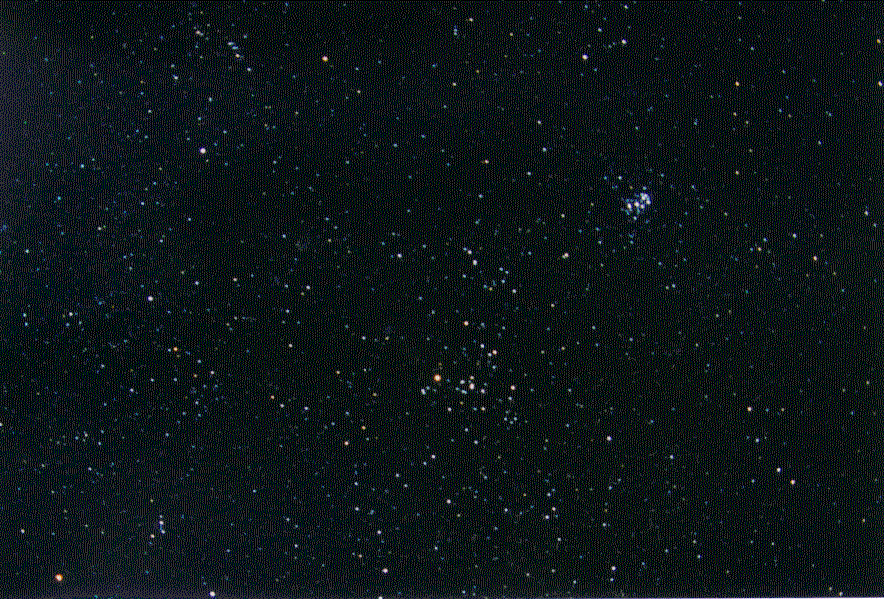 | Here's a shot of the Taurus region of sky.
This shot was taken piggybacked on the C8 with a 35mm lens on Kodak Gold 800 film
for 10 minutes. You may recognize it in gif form as the background on some of the
other pages here. You can clearly see the Pleiades and Hyades clusters along with
Aldeberan. I like the colors of the different types of stars in this photo, too. It's
something you can miss with the naked eye sometimes. |
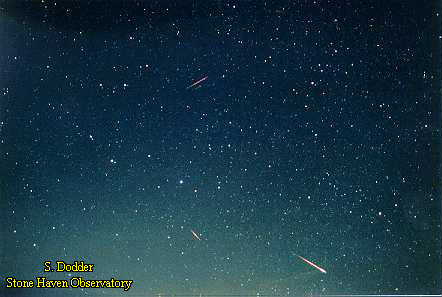 |
This was the only successful shot of 10 exposures attempting
to capture Leonid meteors on film. If you know the sky even a little, you can see how th
meteors trace back to the "head" region of the lion. It really illustrates the "radiant"
concept well. That being the illusion of the meteors all radiating from one point in space,
much like driving through a snow storm, where all the flakes appear to come from directly in
front of you. |
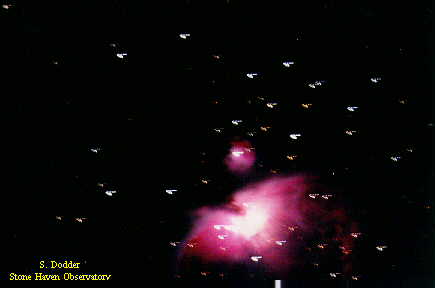 |
Ok, this one's not so great, but it _is_ the
first deep sky object I attempted at prime focus from the permanent pier in Stone Haven.
I figured it'd be a good target for starters. Big, bright, beautiful, hard to screw up.
I think this was an 8 minute exposure on 800 speed film, but I'm not sure. It's only
guidance was with the standard C8 drive, hence the periodic error is plain. I really like
the colors though, and it _is_ one of the most recognizable objects in the sky. |
